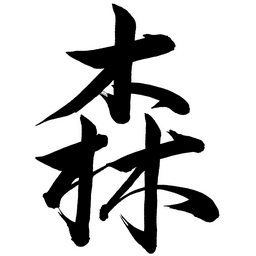| Articles | |
| Paul Fischer | The Creation of Daoism |
| Thomas Michael | Ge Hong’s Xian: Private Recluses and Public Alchemists |
| Ping Yao | Changing Views on Sexuality in Early and Medieval China |
| Patricia E. Karetzky | The Transformations of Zhenwu/Xuanwu |
| Wu Guo | The Record of Pure Brightness: Versions and Contents |
| Chi -Tim Lai | The Cult of Spirit-Writing in the Qing: The Daoist Dimension |
| Forum | |
| Livia Kohn | The Inspirational Laozi: Poetry, Business, and the Blues |
| David McLachlan Jeffrey | Daoist Wisdom for Teachers: A Diary Study |
| Brian Hoffert | Beyond Life and Death: Zhuangzi’s Great Awakening |
| Denis Mair | A Storehouse of Changes |
| Hirsh Diamant & Steve Jackowicz | Daoist Martial Alchemy: The Yijin jing at the Tongbai Gong |
| Michael Saso | The Daoist Jiao Celebration |
Paul Fischer – The Creation of Daoism
This paper examines the creation of Daoism in its earliest, pre-Eastern Han period. After an examination of the critical terms “scholar/master” (zi) and “author/school” (jia), I argue that, given the paucity of evidence, Sima Tan and Liu Xin should be credited with creating this tradition. The body of this article considers the definitions of Daoism given by these two scholars and all of the extant texts that Liu Xin classified as “Daoist.” Based on these texts, I then suggest an amended definition of Daoism. In the conclusion, I address the recent claim that the daojia/daojiao dichotomy is false, speculating that disagreement over this claim arises from context in which Daoism is considered: among the other pre-Qin “schools of thought” or among other world religions.
Thomas Michael – Ge Hong’s Xian: Private Recluses and Public Alchemists
This article addresses the position of Ge Hong (283-343) in early medieval Daoism by provoking a reconsideration of earlier forms of Chinese religion. The article argues that Ge Hong’s greatest innovation was his bringing together two separate traditions of early Chinese religion, namely that of the xian (often translated as “immortal”) that I identify with early Daoism, and that of alchemy that somehow was related to the fangshi movement. The article examines the historical trajectory of these two traditions as Ge Hong received them by exploring two of his major works, the Baopuzi neipian and the Shenxian zhuan, and examines the ways in which he relates these two early traditions to each other. He does this by portraying and describing two kinds of xian, which I call “private” and “public.” The article shows that Ge Hong’s accomplishment had a deep and lasting impact of the future traditions of medieval Daoism.
Ping Yao – Changing Views on Sexuality in Early and Medieval China
The discourse on sexuality underwent tremendous transformations in early and medieval China. While early imagery and terminology of sexual intercourse reflect a naturalistic attitude toward sexuality, writings from the Han dynasty and the division periods largely reflected the Daoist perception of body, gender, and sex. Such domination gradually gave way to a diverse discourse on sexuality in the Tang, largely due to Buddhist influence and the rise of the examination culture. Tang discourse on sexuality, with its emphasis on sensuality, pleasure, and spiritual bliss, shaped ideals of femininity, masculinity, and intercourse.
Patricia Eichenbaum Karetzky – The Transformations of Zhenwu/Xuanwu
This paper examines the various pictorial representations of Xuanwu/Zhenwu, whose cult has spread since the Song dynasty. It identifies various gods and their images that were gradually subsumed by his cult to visually demonstrate the complexity of both the nature of the Daoist deity and of the evolution of Daoist iconography and religious practice.
Guo Wu – The Record of Pure Brightness: Versions and Contents
This paper inspects three versions of the Jingming zongjiao lu (Record of the Lineage and Teachings of [the School of] Purity and Brightness). It introduces the many different scriptures contained in this compendium and explores its relationships to the Ming-dynasty Daozang (Daoist Canon) to offer a deeper understanding of the key sources of this school in the Ming and Qing dynasties.
Lai Chi-tim – The Cult of Spirit-Writing in the Qing: The Daoist Dimension
In Chinese religions, “spirit-writing” is an oracular technique that channels communication between the realm of deities and groups of devotees. Popular in 19th-century China, there is little evidence that it was particularly Daoist and that spiritwritten scriptures contained in the Ming Daozang emerged directly from traditional Daoist doctrine. However, its adoption in the Qing greatly influenced the development of the religion, sparking the growth of lay practice. Beginning in the early 17th century, literati-led spirit-writing altars flourished, devoted to the immortal Lü Dongbin. Small but widespread groups centering on altars since then have represented a third facet of the religion, besides monastic and fire-dwelling Daoism. Not founded by monks or priests, these groups are lay congregations centering on spirit-writing cults to Patriarch Lü. They place strong emphasis on the personal aspect of devotion and self-cultivation through internal alchemy and other methods, commonly revealed through spirit-writing. Central to their belief structure is a shift from institutionalized to local and personal religion, opening a different path to salvation and exploring new forms of meditative processes. The compilation, production, and circulation of different editions of their texts, such as the spirit-written Lüzu quanshu, shows an association network devoted to lay Daoist spirit-writing cults not only in the main centers of Wuchang, Changzhou, Hangzhou, Chengdu, Beijing, Guangdong, and elsewhere.
